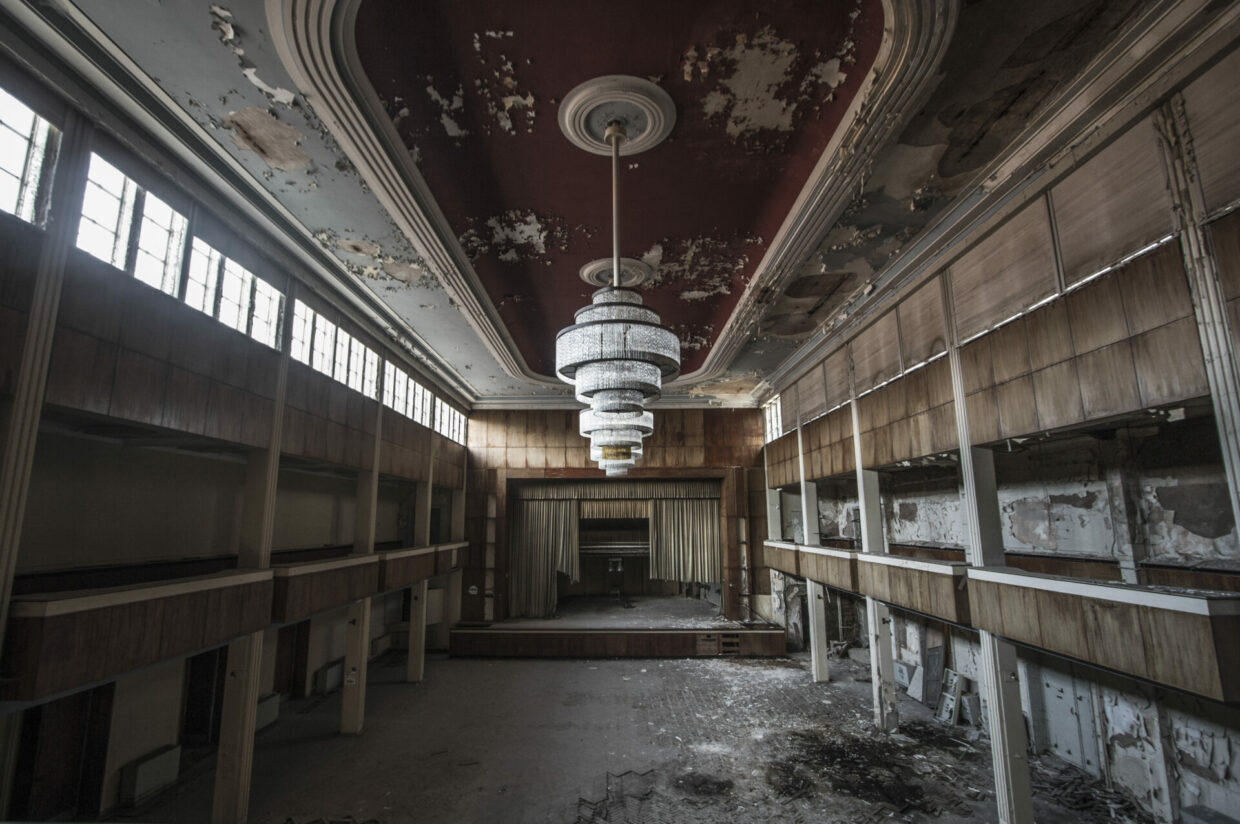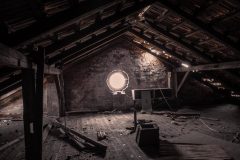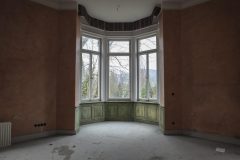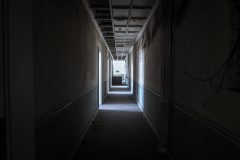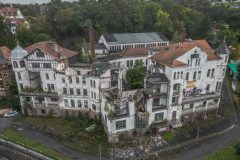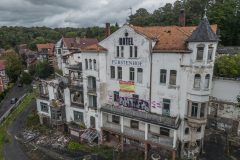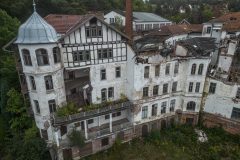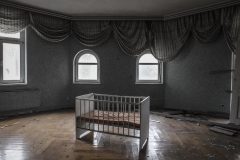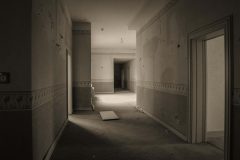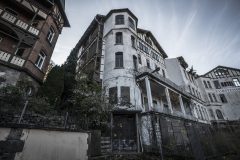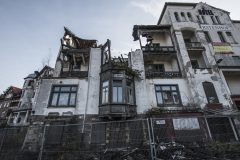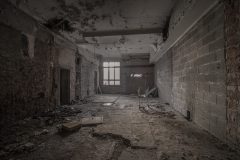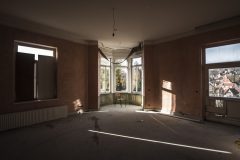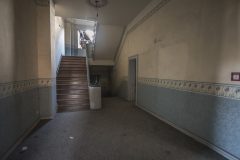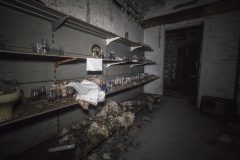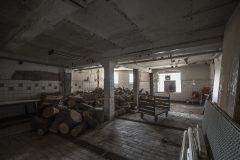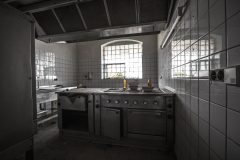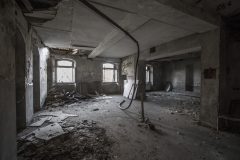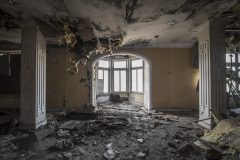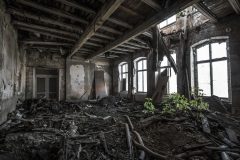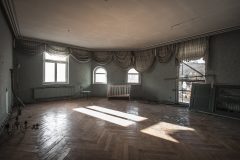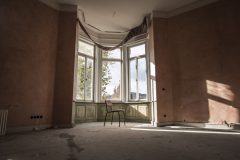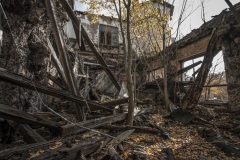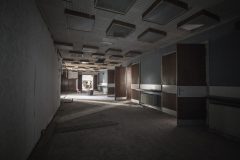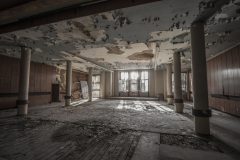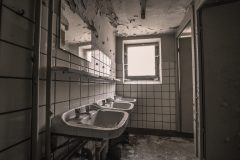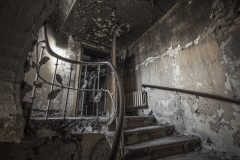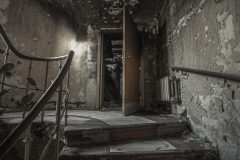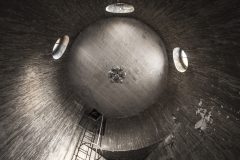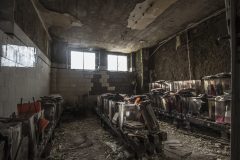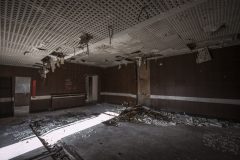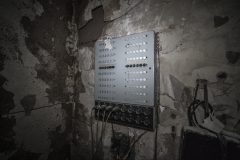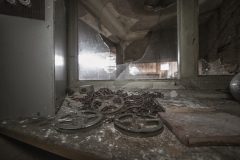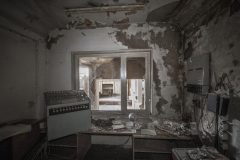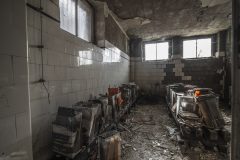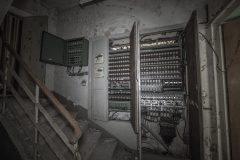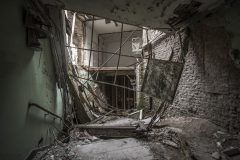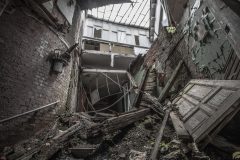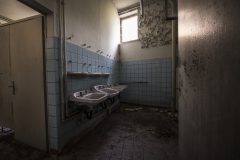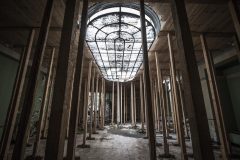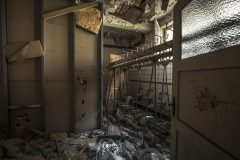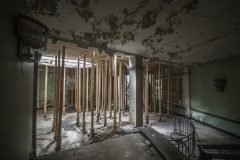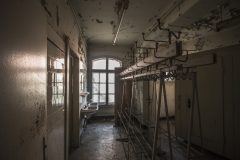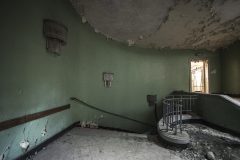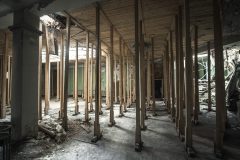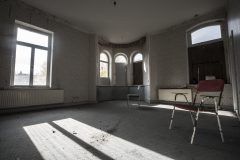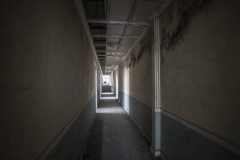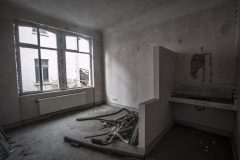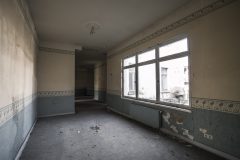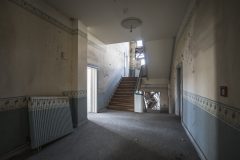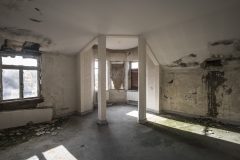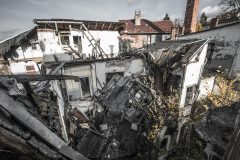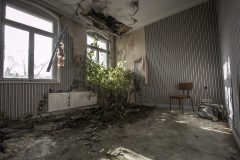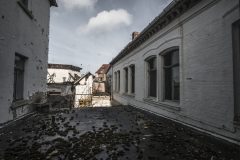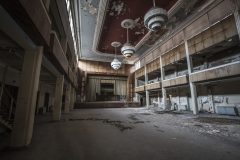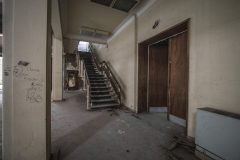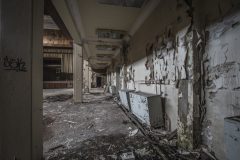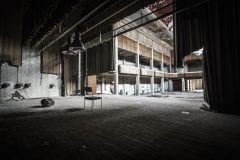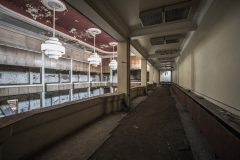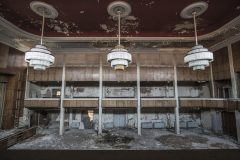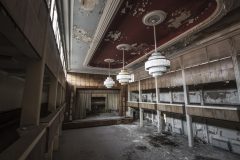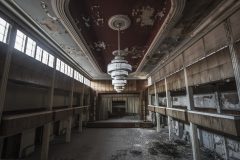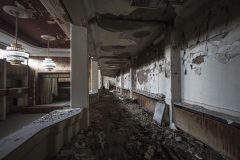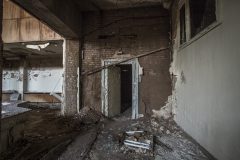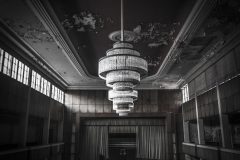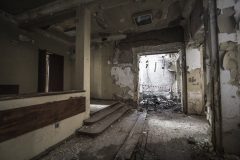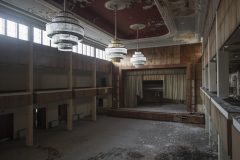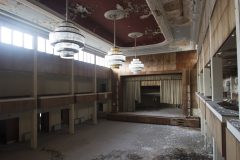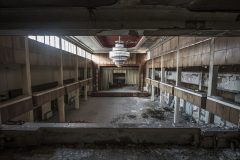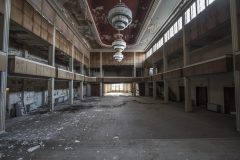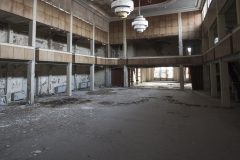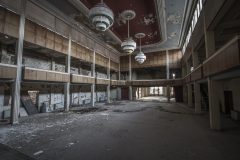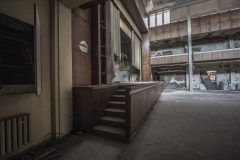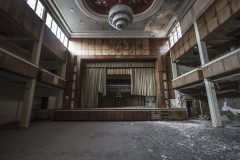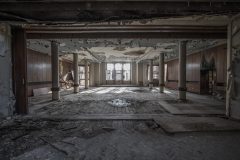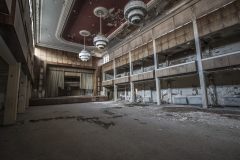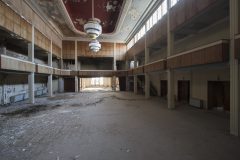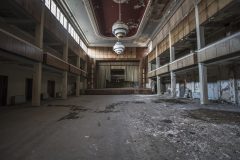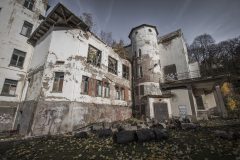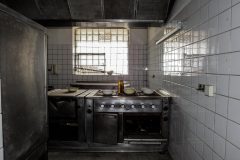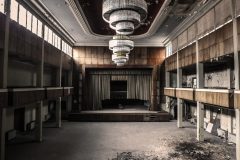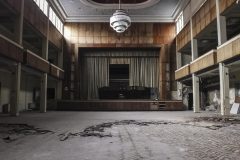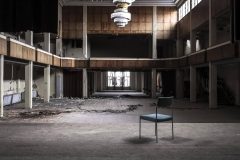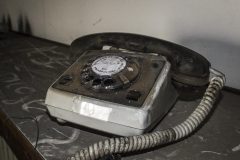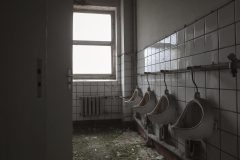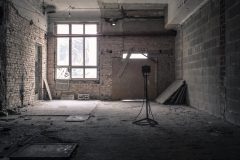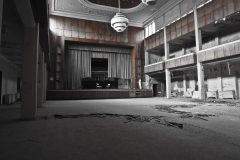The butcher Samuel Liebetrau built a summerhouse in 1854 which would later become the basis of the hotel Fürstenhof. This first building was bought by the geologist Johann Georg Bornemann who expanded it with several extensions. The finished building was named “Villa Bornemann” after its completion. The architects Georg Unruh and Lorenz Freitag made plans for a large renovation and expansion of the existing structures in 1902. The work was finished in Mai 1902 and the hotel opened under the name ‘Kurhaus Hotel Fürstenhof”. The big hall could house up to 1800 people and was the biggest event hall in whole Thuringia at the time.
In the year 1928 a big fire took place in the building and destroyed the big hall completely. It was reconstructed in 1930 by the design of Curt Mergenbaum, Willy Krüger and Hermann Fischer-Barnicol in a simplified form. The new hall now had space for 2000 people and was often rented for campaign rallies. Even Adolf Hitler spoke there in October 1932. The tourism of the city Eisenach declined heavily during the 2nd World War. Many hotels had to use rooms to accommodate and rehabilitate soldiers from the frontline. After the war, refugees and homeless people were admitted to the building. Later on, big events by the Eisenacher SPD and KPD-Ortsgruppen took place in the big hall. During this time Wilhelm Pieck spoke there addressing the merging of SPD and KPD.
In the 1950s the hotel was renovated as a place for culture, sport and dance events. The big hall got its final simple look with wood panels spanning across the walls. Proms by dance schools were held there and a lot of citizens of Eisenach had their youth ceremony there. It was also in the 1950s when the name was changed to “Hotel Stadt Eisenach”, because ‘Fürst’ (prince) wasn’t compliant with the GDR politics. After the end of the GDR it got its old name back and was run privately. However, during the GDR the hotel suffered a lot of investment pile-up, the building needed a proper renovation in the 1990s. The owners started to renovate some parts of the big complex. Many rooms, especially in the left wing, were gutted but never finished. The front right corner building has seen the most small renovations, a lift was added and the electrical system was put up to the new standards. Sadly, in the process money ran out and the company went bankrupt.
The building was bought by another investor in the 90s and big plans were made to renovate it. The plans included the construction of a new extension on the hill behind the Fürstenhof. A pool, spa and everything a modern hotel would offer was planned to be added to the complex. However inspections in the year 2000 lead to the conclusion that the renovation is uneconomic. The floor plan of the building which grew over the last century was too complex and too hard to clean up. The plans were scrapped and the hotel was on sale again.
In 2004 the monument protection was lifted. Around this time the current owner bought the complex. He had plans to demolish the buildings and construct new tenements on the property. He ordered it to be demolished in 2014, but the city Eisenach prohibited this. This ultimately led to the legal battle of the owner and the city Eisenach which still goes on to this day. The owner was promised large incentives to preserve the Villa Bornemann and the corner building. As he claimed, the sums were way lower than promised and far from enough to help him carry out the renovation. He tried to sell it back to the city Eisenach for 3 million Euro, but they didn’t want to pay that much and so the debate went on.
In August 2021 the court decided that a complete demolition of the property is possible and legal. It wasn’t long after that the city Eisenach appealed the verdict and declared it as a defining part of the city. Most residents of the city are also against the demolition and hope for a renovation of the historic place. It is one of the saddest yet interesting stories following up an “abandoned place”. It’s a fail of both parties in the fight, with none of them getting their interest through and not being properly able to negotiate over 20 years, leading to the total demise of the ensemble. On Good Friday in 2022 the oldest part of the complex, the Villa Bornemann, collapsed almost completely. We keep this text update in the future since we care a lot about this story.
We visited this place 2 times resulting in images from 2018 and 2021 combined in the gallery below.
Our location rating:
